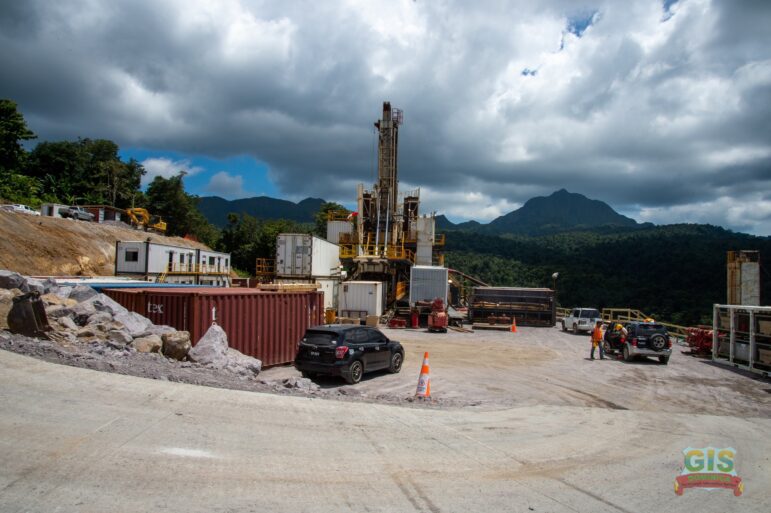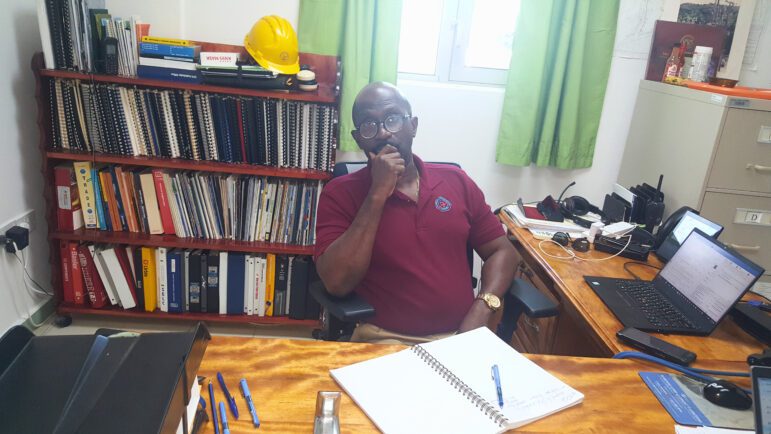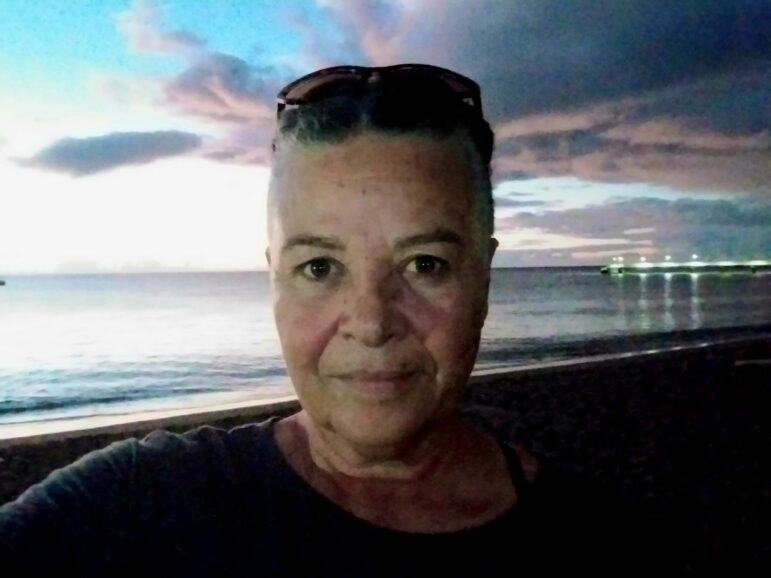Measuring 46 kilometres in length, the Caribbean Nation of Dominica is a volcanic island with nine dormant volcanoes, mountain streams, rivers, waterfalls, densely forested areas, large geothermal reservoirs, and a population of about 72,000. Dominica is optimistically exploring geothermal energy and constructing a 10 MW geothermal power plant by the beginning of the year 2025.
However, some residents of Roseau Valley and Laudat have expressed safety concerns regarding the geothermal project’s impact on the island’s volcanic activity. They are concerned about the damage to tourist attractions in the Roseau Valley. Residents say they are also not clear about the status of an Environmental Social Impact Assessment (ESIA) Technical Study submitted to the Physical Planning Division for approval.
Members of the Waitukubuli Advocate for a Viable Environment (WAVE) say they attempted to contact the Physical Planning Division twice, in 2022 via formal letter and in June 2023, regarding the validity of an ESIA for the geothermal project, but there has been no response from the Division to WAVE since then. However, Climate Tracker was able to confirm that an ESIA application was submitted by Jacobs New Zealand Limited and approved by the Physical Planning Division for the ongoing geothermal project.
Dominica Geothermal Development Company Limited’s (DGDC) geothermal project met the requirements, and the Planning Division requested and approved the ESIA Technical Report.
It is important to note that due to changes to the project design from 7 MW to 10 MW, technology, the revision in the reinjection strategy, and the passage of time, the DGDC revealed that a separate ESIA for the reinjection well and the pipeline was conducted by Eclipse Inc. A Washington-based firm, Environmental Resource Management (ERM), was also contracted to produce an addendum to the existing ESIAs.

Why Turn to Renewable Energy?
Dominica is one of the few countries that, according to the ‘Low Carbon Climate Resilient Strategy for 2012–2020,’ has been scientifically approved for the exploration and establishment of all five renewable sources of energy: solar, hydro, wind, geothermal, and biogas. DGDC and the government say the reason for exploring this renewable resource is to improve the country’s economy and transform its energy sector. The Government has invested some USD 50 million in this project thus far.
In 2005, the Organisation of American States conducted an exploration survey in the Wotten Waven area of Dominica. This survey led to the discovery of the Roseau Valley Geothermal Field. Geoscientific surveys were conducted by the BRGM group in 2008, and they identified a potential geothermal reservoir for investigation and testing of deep exploratory wells, and so began the journey.

Chief Operating Officer at the Dominica Electricity Services Company (DOMLEC), Dave Stamp, is in full support of the construction and completion of DGDC’s geothermal power plant. He said, “We believe that generating energy through fossil fuels is not sustainable; at some point in the future, it will run out.” Over-reliance on fossil fuel-based energy puts a strain on the economy and the finances of consumers connected to the electrical grid.
Climate Justice Achievable Through Geothermal Energy
Developed countries like China, The United States, India,and the European Union are the world’s largest polluters of Greenhouse gases and are the least impacted by climate change. These territories must be held accountable and provide financial support for mitigation projects and adaptation practises in countries like Dominica that are negatively impacted by climate change.
Despite concerns of uncertainty, if this energy project is successfully completed, it could improve sustainability through the creation of greener and more financially stable livelihoods in Dominica, especially for marginalised groups. Attorney-at-law and Former Registrar of the Supreme Court, Reginald Winston, gave his account of increased instances of job creation and financial sustainability for some of the residents of the town of Roseau. “I think the communities around that area have just been revived. There’s a lot of action.”

On the other hand, Executive Member of WAVE, Margaux Larocque, is not convinced that the DGDC and the government have taken the best approach to carrying out this energy project. “It’s been how long? I think they need to just stop, just stop. We have wind, we have sun, and we have water,” Larocque laments. She referred to the lengthy delays and failed attempts at establishing a suitable production well, stating that the cost incurred since 2011 could have been used to develop other sources of renewable energy.
However, Stamp stressed that such a claim can only be made after the completion of current-feasibility studies, taking into account the present state of the economy and the resources available to it. “Renewable energy technology are very funny, you have to do proper feasibility assessment.” He continued, “You have to take each case, case by case. You can’t simply say, you should have put in a solar farm instead of doing the geothermal and finished with that.” He said that at one time, DOMLEC did a recent feasibility study on a Wind Energy Plant.
An Urgent Call for Greater Financial Assistance for SIDS Pursuing Renewable Energy
According to the World Bank, in 2013, US$14 million was raised by The Department of International Development (DFID) for Indonesia, Ethiopia, Dominica, and St. Lucia. This eventually resulted in the share of Multilateral Development Banks (MDB) geothermal sector financing for upstream geothermal development increasing from 6 percent in 1975–2012 to 39 percent in 2013–2020. Stamp called on international donor agencies to make grants available for green energy projects. “The key, too, is to form these projects with institutions like the World Bank—low-cost grant funding if possible; if not possible, then very low interest rate funding sources”, Dave said.
Pressing on Despite Setbacks
According to Knoema.com, in 2021, CO2 emissions per capita for Dominica were only 2.56 metric tonnes. The government says the construction of a 10 MW geothermal plant will further reduce its ‘already low’ carbon footprint. The power plant is expected to provide 23,000 homes with clean energy upon its completion.
Speaking at a DGDC public meeting in May, Programme Support Unit Lead Shisha Birmingham informed Laudat residents of the company’s interest in conducting the RV-P2 flow testing phase of a backup production well. She also listed the completed objectives of the company for 2023: “So we have completed the two access roads that I showed you previously.”
The DGDC flow testing of the RV-P2 production well and RV-I2 reinjection well site have been successful and are in its final stage of development.
Selected Transmission Routes
Three main routes have been identified for the transmission of Geothermal Energy in Dominica: the 33 kV route, which goes underground from Laudat to DOMLEC’s three hydro stations, then to DOMLEC’s Fond Cole Station; and the 69 kV route, which will run overhead and underground from Laudat to DOMLEC’s Fond Cole station, then to DOMLEC’s Sugar Loaf Station. The geotechnical survey for the transmission routes is complete, and the designs have been drafted. An ESIA is ongoing for this part of the project. Consultations have been held in six communities along the transmission route. Tenders are being prepared for the Roseau Valley transmission line routes.
Stamp has no concerns about the transmission routes selected and assures that all safety guidelines are being implemented. The network will be owned by the government and operated by DOMLEC; in other words, DGDC sells the energy to DOMLEC, and DOMLEC resells that energy to its national consumer base. Negotiations on the lease/Operation and Maintenance agreement being developed between DOMLEC and the Central Government are still ongoing.
Concerns and Views on Economic Benefit and Livelihoods
Residents from the Roseau Valley have expressed concerns about losing their hot water springs, which are used as a source of income and recreation for the community. Through its official website, DGDC assured owners of the hot spring pools and customers that the drilling and establishment of the geothermal power plant would not affect the spas in the valley. The power plant will be fed from wells that have already been drilled far below the surface.
Larocque revealed some issues with quarrying by the DGDC in the exploration of an RV-P2 production well site on April 6th, 2023, which led to large amounts of silt going into the river bed at Titou Gorge, raising the river bed, and could sooner or later affect the natural ecosystem of the area, a well-known tourist attraction in Dominica.
The sentiments expressed by the DGDC are echoed by Winston. He said that his “initial concerns have been allayed when the DGDC explained how drilling into the reservoirs would occur.”
Stamp is ecstatic about the improved economic and energy sustainability that the geothermal power plant will bring to the Caribbean nation. “I’m excited this is happening; we are at the point of no return.”
Dominica will soon be a leader in geothermal energy for Small Island Developing States
Dominica’s approach to the construction of a geothermal power plant is viable, but increased engagement with the media and the public is still needed. While this project will provide effective Climate Justice solutions to its citizens if properly executed, the setbacks experienced up until this point regarding the exploration for suitable well sites have been a major delay and costly venture. Dominica is deserving of international climate funding for climate adaptation and mitigation projects and green energy initiatives. To ensure that such projects are done efficiently, there is a need for greater transparency, increased cooperation with independent media personnel, unbiased oversight, and honest implementation of procedures and policies in national projects like the proposed 10 MW geothermal power plant.
This story was published by CIJN with the support of the Caribbean Climate Justice Journalism Fellowship, which is a joint venture between Climate Tracker and Open Society Foundations.